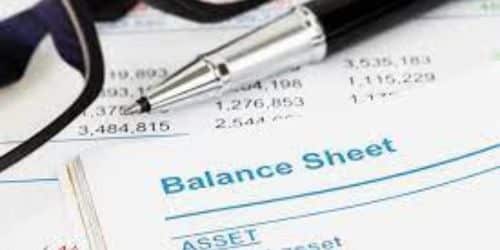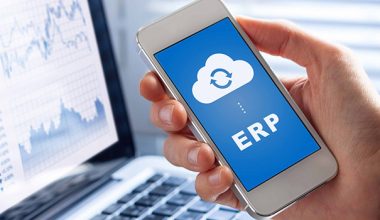Businesses utilize a balance sheet, a crucial financial document, to comprehend their financial situation. They may make wise financial decisions for the health and continued growth of their firm by assessing and itemizing their assets and liabilities. Businesses can calculate their net worth by deducting their liabilities from their assets, which is crucial knowledge for making investments, repaying loans, and other financial decisions. We will be learning from this post what a balance sheet means in account, business, and its difference with income statement
What Is a Balance Sheet
The assets, liabilities, and equity of your business are tracked and recorded using a balance sheet, a financial document, and an accounting tool. It enables you to decide on the financial health and resource distribution of your business. You can calculate your company’s net worth, sometimes referred to as the owner’s or shareholder’s equity, by deducting all of its obligations from all of its assets using this sheet.
What is Listed on a Balance Sheet?
Due to each company’s distinct financial state and the activities they are engaged in, every balance sheet is different. Three items that are frequently found on a balance sheet are as follows:
- Shareholders’ equity
- Assets
- Liabilities
Why Do Companies Create Balance Sheets?
The balance sheet of the company can be useful by accountants and management teams for a variety of things, such as:
- Evaluating the owner’s and management’s financial situation
- Sharing financial information with stakeholders and government organizations
- comparing balance statements from several time periods to predict growth tendencies
- Choosing expansion strategies
- Getting ready for an acquisition or merger
- Comparing and examining past financial data to spot trends and developments
How to Create a Balance Sheet
To produce this sheet, adhere to these steps:
#1. Decide on a Reporting Period
Choosing the period of time that the sheet will measure, or the reporting period, is the first stage in generating a balance sheet. The reporting date is often the final day of the reporting period.
#2. Calculate the Value of all the Assets.
On the spreadsheet, add a column for assets with sections for current and noncurrent assets. List each existing asset of the business together with its value, then tally them all up to reach a subtotal. The noncurrent asset section should then contain a list of all the noncurrent assets, their addition, and the subtotal. The final step is to combine the two subtotals and enter the result in a field at the bottom of the assets column.
#3. Total Liabilities.
Construct a column for liabilities on the balance sheet with sub-sections for current and noncurrent assets, similar to the assets section. Put the sums of all the company’s liabilities in the relevant section. The subtotal of the current obligations should then be added up. To handle the noncurrent liabilities, repeat the process. The entire liability amount can then be calculated by adding the subtotals collectively.
Equity, or the amount of money that belongs to firm owners, is the last data input field. Some businesses provide stock, enabling staff members and other individuals to have a stake in the business. Other businesses have a single proprietor who may have made a financial commitment. Depending on the company’s organizational structure and legal categorization, the information in this section may vary.
#5. To Compare Equity and Liabilities to Assets, add Them.
You may calculate the total and ensure that the two sides balance now that all the components of a balance sheet are in place. To make sure that the company’s assets, liabilities, and equity are equal, use the formula below:
Assets = Liabilities + Shareholders’ Equity
Check the sheet for mistakes or missed entries if the calculation doesn’t balance.
What Is a Balance Sheet Account
One of the two categories of general ledger accounts is a balance sheet account. The income statement accounts are thus the additional accounts in the general ledger. The assets, liabilities, and owner’s or stockholder’s equity of a firm are categorized and stored in balance sheet accounts. On the company’s year-end balance sheet, the balances in these accounts as of the accounting year’s end will be shown.
Because the balances in the balance sheet account are not closed at the end of the accounting year, they are also known as perpetual or real accounts. Instead, the ending balances will be carried over to the following accounting year to become the beginning balances.
Examples of Balance Sheet Accounts
Cash, short-term investments, accounts receivable, reserves for notes payable, doubtful accounts, inventory, payroll taxes payable, paid-in capital, investments, land, buildings, equipment, accumulated depreciation, accounts payable, furniture and fixtures, retained earnings, and other items are examples of balance sheet accounts.
What Is a Balance Sheet for a Business
Assets, liabilities, and shareholders’ equity are the three fundamental types of information that every sheet includes about your company. The financial health of your company can be quickly seen when you combine these facts:
#1. Assets
These are assets that the company owns, including cash in the bank, inventory, computer equipment, receivables, and even what’s known as goodwill, which comprises intangibles like your reputation from years of cultivating connections with consumers, or the worth of your logo and brand.
#2. Liabilities
There are two parts to the right side: a top and a bottom. The business’s debts are listed first, including accounts payable (the sum owing to vendors), loan payments to banks, and back wages to employees.
A column for shareholders’ equity is located below that. Anything that would remain after the company’s liabilities have been paid is known as shareholders’ equity. The owner of a small business is sometimes the only stakeholder. The foundation of a business balance sheet is a straightforward formula: Liabilities plus shareholder equity equals assets. This formula demonstrates how the assets owned by a corporation were acquired. Owners have either made financial investments in them (shareholders’ equity) or taken on debt (liabilities) to pay for them.
The Purpose of a Balance Sheet
The ability of your company to weather an economic or competitive shock or to invest in new goods and services can be inferred from sheets. By examining the ratios between the columns, you can get a sense of how the company is doing on several fronts. For instance, a business may not be investing enough in expansion if it continually has a lot of cash on hand and few obligations. Or, for a corporation with a lot of debt but few assets, it may be necessary to develop new sources of income or even restructure the debt in order for it to be manageable.
Balance Sheet vs Income Statement
Along with the cash flow statement, the income statement and balance record are the three essential financial statements of any business. They keep track of the company’s financial transactions and give management and investors useful data. You might profit from contrasting income statements and balance records in order to provide sound financial recommendations. Start by going over their definitions:
What’s an Income Statement?
An income statement is a type of financial statement that details a company’s income, expenses, and final profitability. Its value, together with the balance record and the statement of cash flows, is one of the three essential financial statements of a firm and reveals the financial health of the entity through its revenues, expenses, and sales.
What’s a Balance Sheet?
Another essential financial statement of a corporation is the balance sheet. It displays the total assets, liabilities, and equity of the company over time. The net worth or financial status of the company is determined in part by these three factors. If the business uses its assets to pay off its debts, what would be left over would go to the shareholders. Businesses can calculate their total assets when producing their balance sheet by adding their total liabilities to their entire equity.
Differences Between an Income Statement and a Balance Sheet
You might think about a lot of differences between these two financial products. An income statement and a balance sheet are different in the following ways:
#1. They Show Different Values
An income statement reports value differently from a balanced record. The income statement lists a company’s net profits for a given time frame. It takes into account receipts, outlays, and profit or loss in its accounting. There is a display of the financial standing of a corporation on its balance sheet at any particular time. It takes stockholders’ equity, liabilities, and assets into account.
#2. They Have Different Time Spans
The reporting period useful in both statements is another significant distinction. The income statement displays the financial health of an organization over a period of time, which may be two weeks or several years. A balance sheet, such as the financial statement for January, displays a company’s financial situation for that particular time period. A balance sheet as of January 25 and an income statement as of January may be included in this statement.
#3. They Have Various Management Functions.
The objectives of an income statement and a balance sheet differ, although both offer useful financial data. Management often uses the revenue and spending information on the income statement to assess whether the business is profitable. A corporation may expand while being unprofitable if costs rise more quickly than sales. Management can identify operational or financial problems that need to be fixed using the income statement.
#4. They Make the Preparation in a Different Order.
Businesses generally prepare both statements using separate methodologies. They regularly evaluate the income statement, frequently on a monthly, quarterly, or annual basis. Then, in order to gauge their profitability, they can choose to prepare or upgrade it. Because a balance sheet needs data from the income statement to be designed, a business can only do it once it is finished.
#5. Their Significance Depends on the Reader
People may read these statements for a variety of reasons, depending on their requirements. They might believe that the income statement is more significant than the balance sheet since it shows how effectively the company’s financial decisions were implemented. Some lenders may prefer a balance sheet over determining a company’s liquidity while the firm is requesting a loan.
Importance of Balance Sheet
A balance sheet is useful to show an organization’s financial situation, including what it owns and what it owes. Below is some importance of a balanced sheet:
- It can analyze the company’s capacity to meet its obligations. An insight into an organization’s short-term financial situation can be from the information on a balance sheet. How well a company can meet its short-term obligations depends on its assets compared to liabilities.
- Assess your risk and credit management. The data displays the debt-to-equity ratio, which reveals whether the company has a high degree of debt or whether taking on the credit risk of taking on more debt is worthwhile.
- Value of the asset. The data aids a buyer in deciding if it is possible to sell off assets without harming the company’s operations.
- Analyze the dividend-paying capacity. Investors can tell if there is enough cash on hand to pay dividends by looking at the cash quantity on a balance sheet.
- Determine the net worth of the company. The information on the balance record can be useful to assess the management and liquidity of assets, as well as to identify net assets and the company’s true value.
- Calculate several ratio calculations to gauge liquidity and solvency. Comparing line items gives various ratio analyses, such as operational efficiency ratio analysis and liquidity ratio analysis, which helps identify places to enhance financial health.
- Entice and keep talent. By publishing their balance sheets, public corporations enable their existing and prospective employees to assess their financial position, assess their decisions, and determine how they handle debt.
How Do You Read a Balance Sheet for Dummies?
It is simply a company’s net worth declaration. Everything the business owns is on the left, or top, side of the balance report.
What Does a Balance Sheet Not Tell You?
The balance sheet, however, does not include information on the firm’s market value, cash flows, profits or losses, or claims made against its assets.
Related Posts
- HOW TO READ A BALANCE SHEET: Explained!
- Accounting balance sheet explained: samples, templates, examples and definition
- WHAT ARE ASSETS AND LIABILITIES: Definition, Differences and Examples
- FINANCIAL STATEMENT: What Is It, Examples, Types & Analysis
- ACCOUNT SPECIALIST: Job Description, Duties & Salary
- HOW TO MANAGE A SMALL LAW FIRM: A Definitive Guide
- BUDGET ANALYST SALARY: What Much They Make in 2023?






